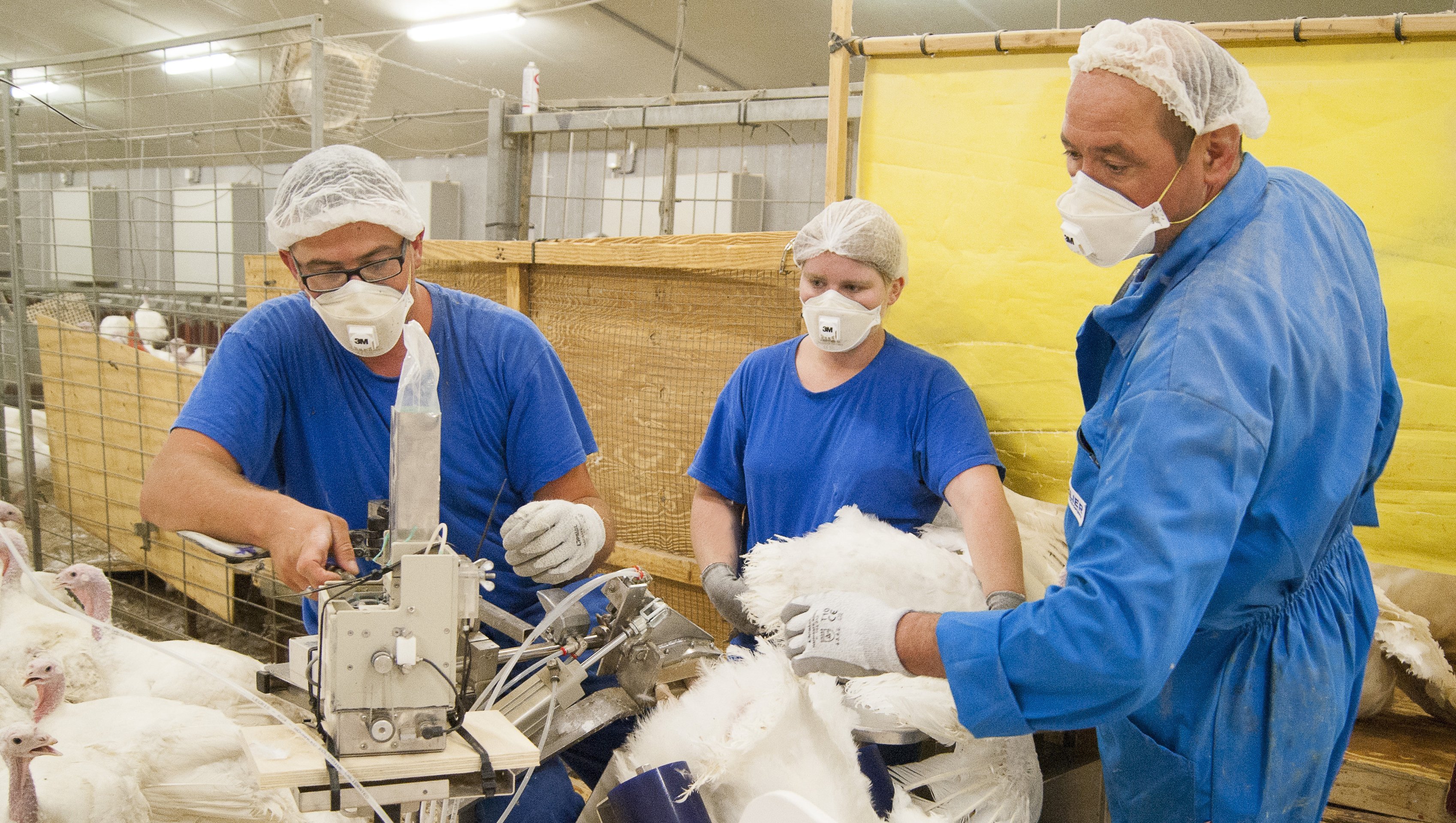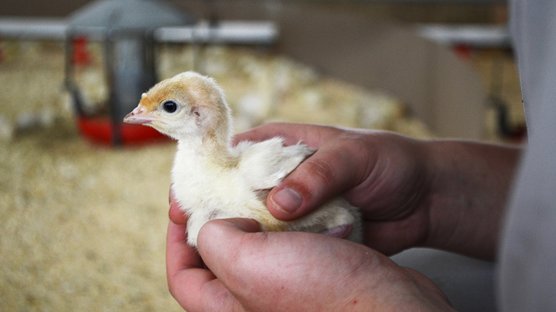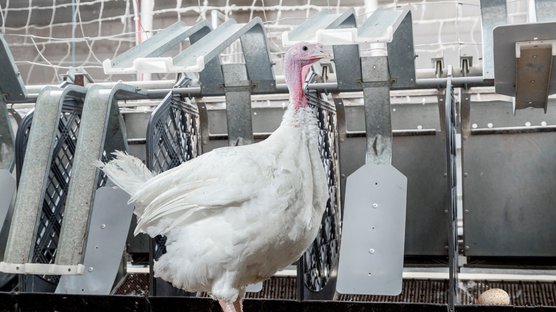
Published on Feb. 25, 2022
Insemination Basics Part 1: Appropriate timing for insemination
Everything starts at day one with our hens. To obtain and maintain high levels of fertility there are key aspects that we recommend from the start.
How we brood our hens will either have negative or positive effects on the results we achieve at the lay farm and will determine when our hens are ready to be inseminated. Inseminating a hen too soon or before she is ready can damage the hen and cause her to go out of production. In order to ensure appropriate timing for insemination and ultimately flock success check out the Hybrid Turkeys recommendations.
Insemination basics – Timing
Determining the best time to inseminate hens can seem like a challenging task, but there are a few indicators that can help show when the appropriate time is right.
- Hens appear to show their best performance when lit at 29.4 to 30 weeks of age (if your flow will allow)
- If hens are darkened out correctly (not before 17 weeks), they should be ready for insemination on Day 14 during the summer months, and Day 16 during the winter months, once the flock has been lit. Keep in mind there are things that can affect the timing or number of days until the hens are ready such as; hen weights, pre-lighting at the grow farm, and light leaks at grow farm.
- The only guaranteed way to tell if a flock is ready for insemination is to physically check the hen. It is recommended to start checking around day 11 or 12 after being lit. We also recommend that you ensure at least 90% of the hens are squatting and 95% or more of the hens are everted/breaking. Never break the hymen with the AI straw.

Insemination basics: Scheduling
Proper insemination scheduling is important to keep the semen storage site full and to ensure excellent fertility. You must start with and maintain a strict Artificial Insemination (AI) schedule. Fast Breeding is a system where the first inseminations should be done at least 3 times within a 7-10 day period and after that, the hens should be inseminated once per week until the end of production. The first insemination is crucial. Keeping the first 3 inseminations close together (limit the number of days between inseminations) will help ensure the best odds of fertility for the whole flock. In Europe most companies tend to go with 3 inseminations within a week period, whereas in North America most large breeder companies are closer to a 10-day schedule.
Example 1: European sample schedule on a farm with 4 barns if all hens are lit in the same week
Barn 1: Monday, Wednesday or Thursday, Monday (7 days)
Barn 2: Monday, Wednesday or Thursday, Tuesday (8 days)
Barn 3: Tuesday, Thursday or Friday, Wednesday (8 days)
Barn 4: Tuesday, Thursday or Friday, Thursday (9 days)
Example 2: North American sample schedule on a farm with 4 barns, if all hens are lit in the same week
Barn 1: Monday, Friday, Wednesday (10 days)
Barn 2: Tuesday, Saturday, Thursday (10 days)
Barn 3: Wednesday, Monday, Friday (10 days)
Barn 4: Thursday, Tuesday, Saturday (10 days)

The proper amount of semen per dose must be determined at first insemination. The first 2 inseminations should start around 6AM (you can start saving eggs after the second AI). Starting on the third AI, your AI time is recommended to be finished a few hours before peak time, or that you start 2 hours after peak time . In today’s world, labor decides or has plays a significant factor in AI start time but where possible it is suggested to stick with morning AI (4AM to 7AM start time) and recommend staying away from evening AI. This allows for better command and control of the insemination process.
There are many factors that contribute to successful and proper insemination. Above reviews scheduling recommendations to determine the most appropriate time and frequency to inseminate. It should be noted that other factors, such as genetics, health, housing type and flock density, also play a role in successful insemination.
For more information or customized recommendations on breeder management please reach out to a member of our Hybrid Turkeys Technical Service Team.



